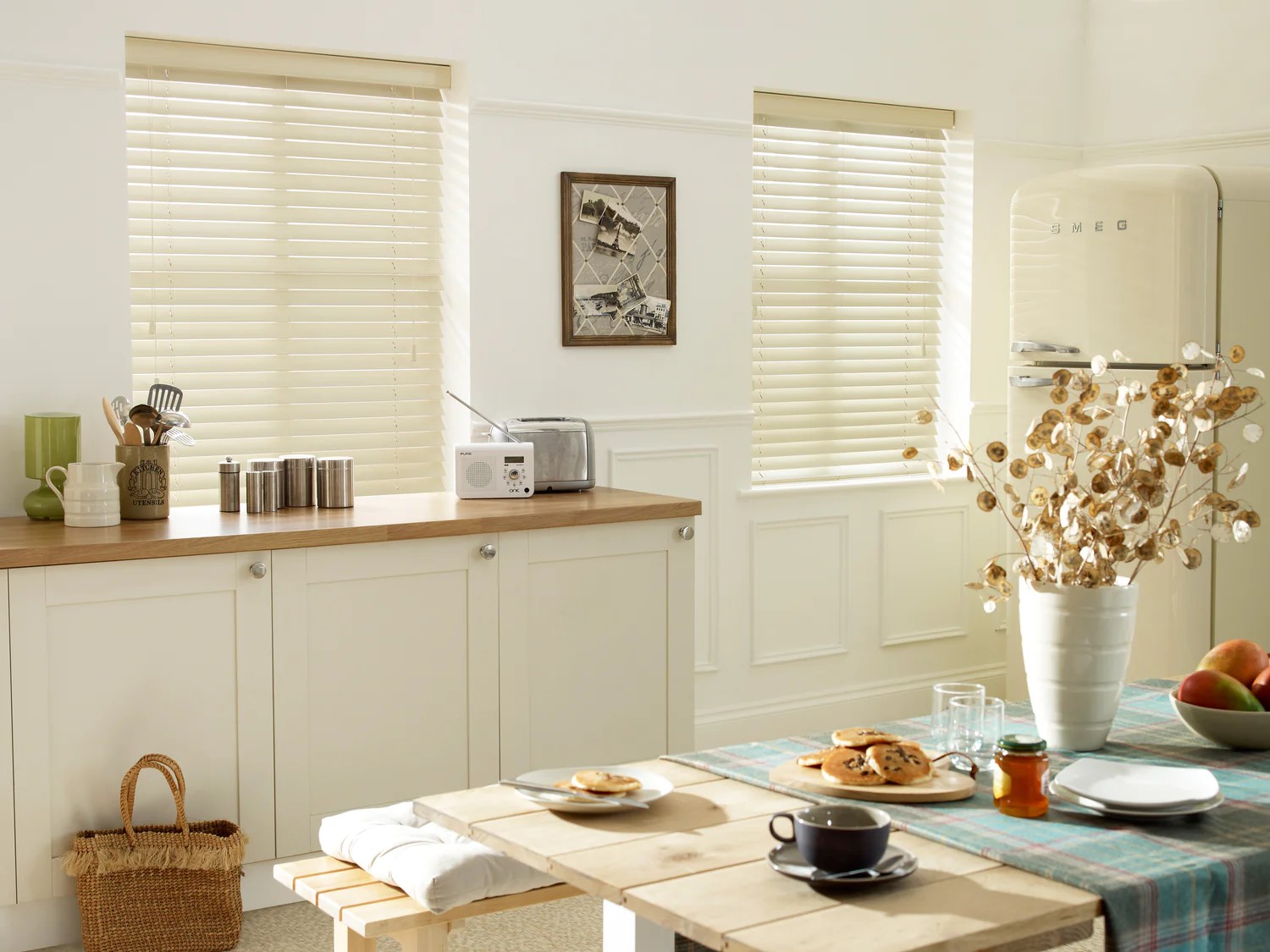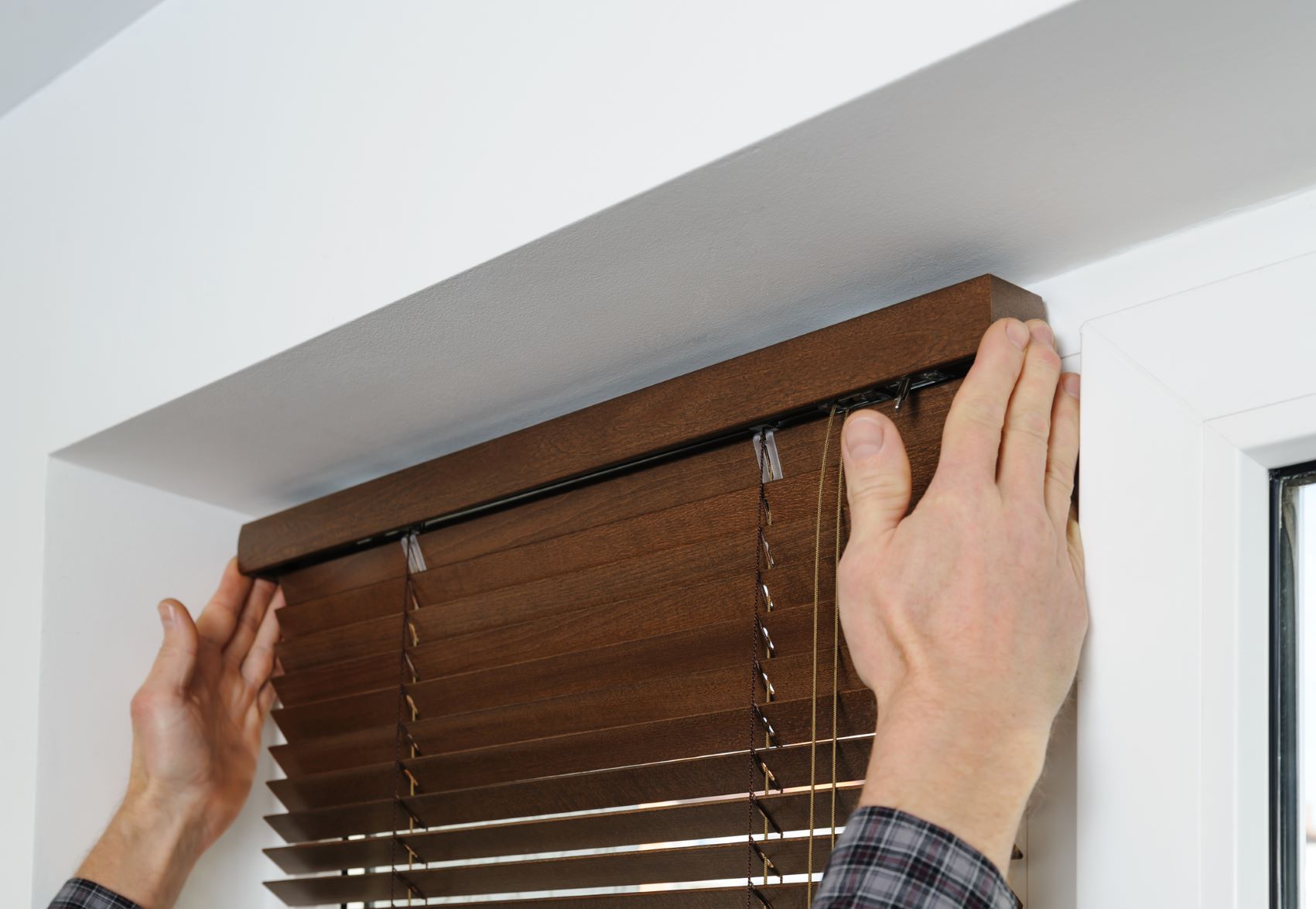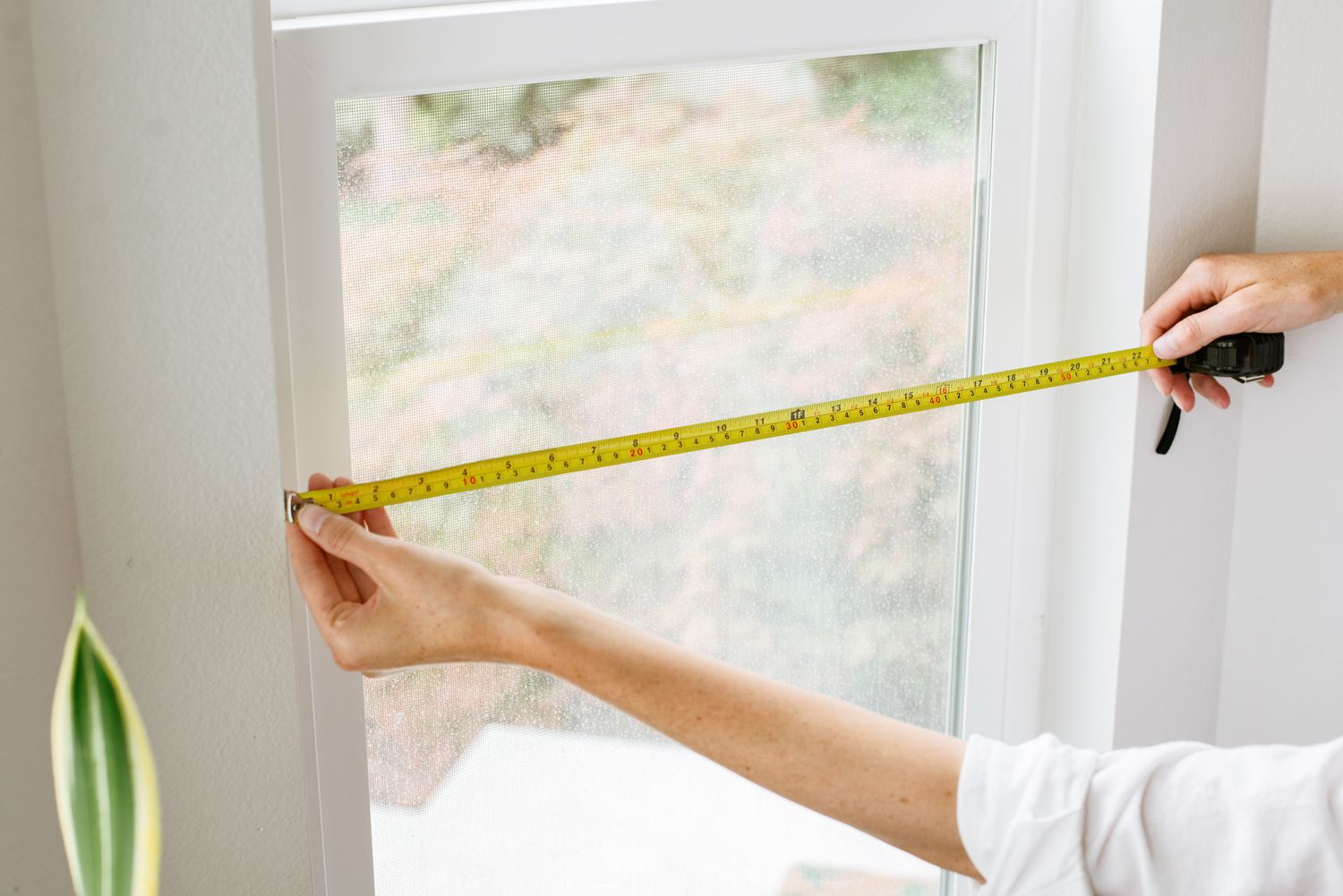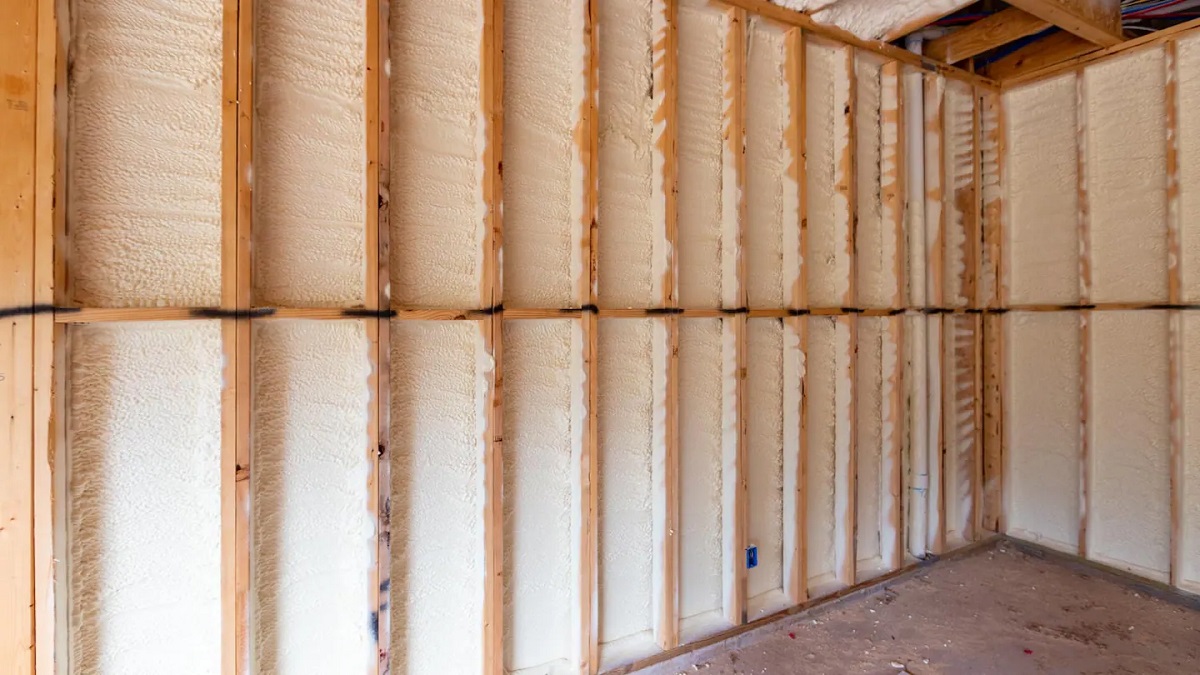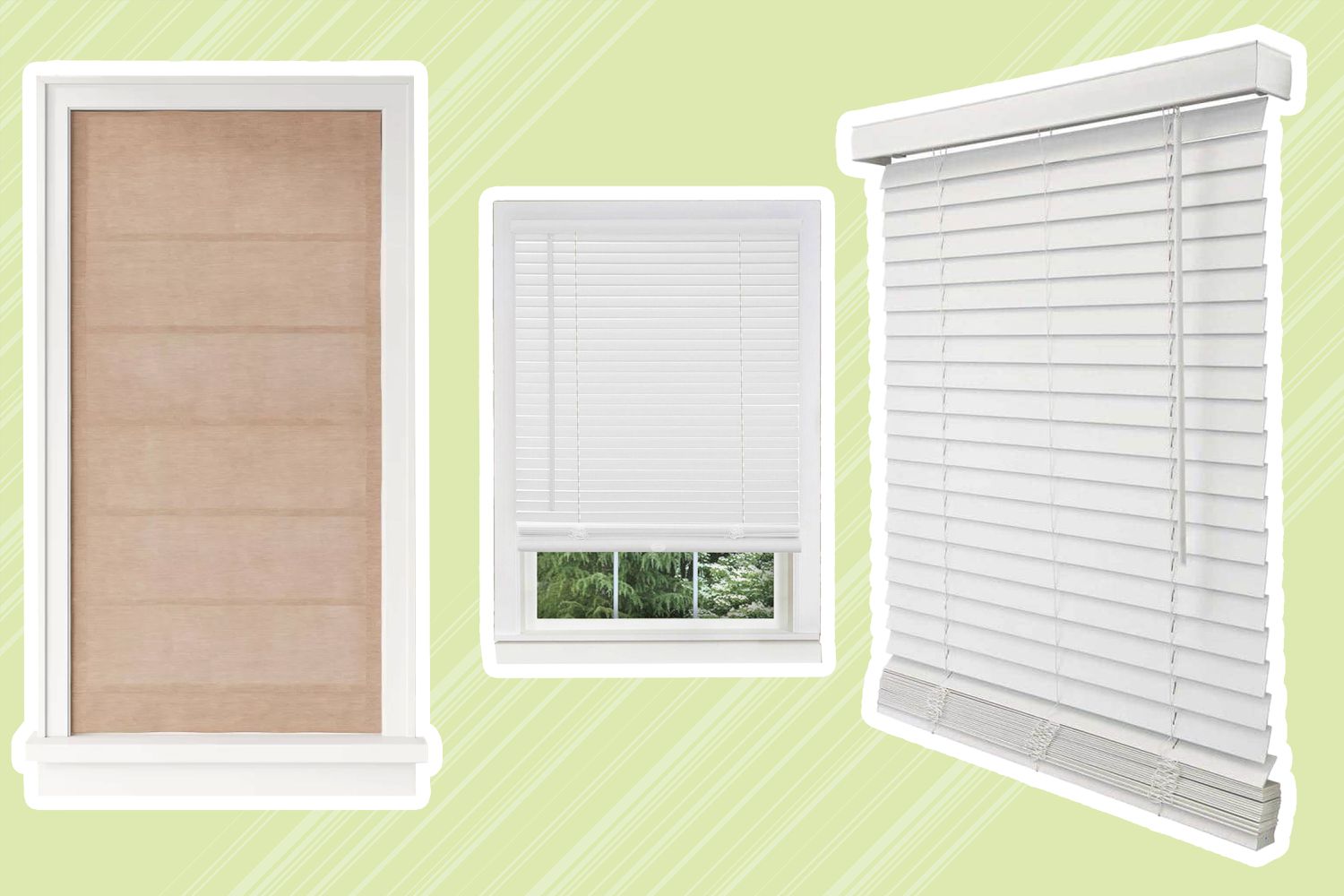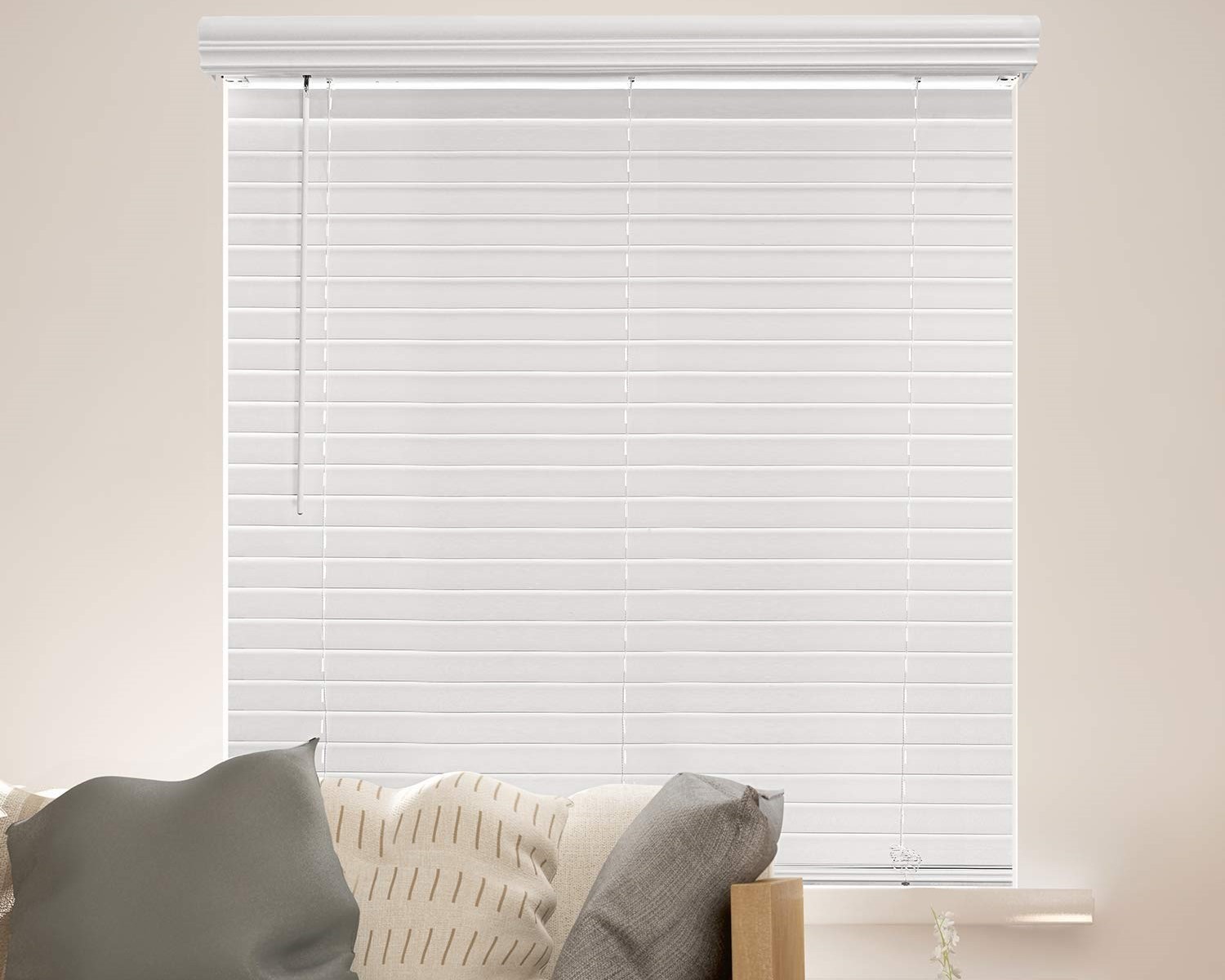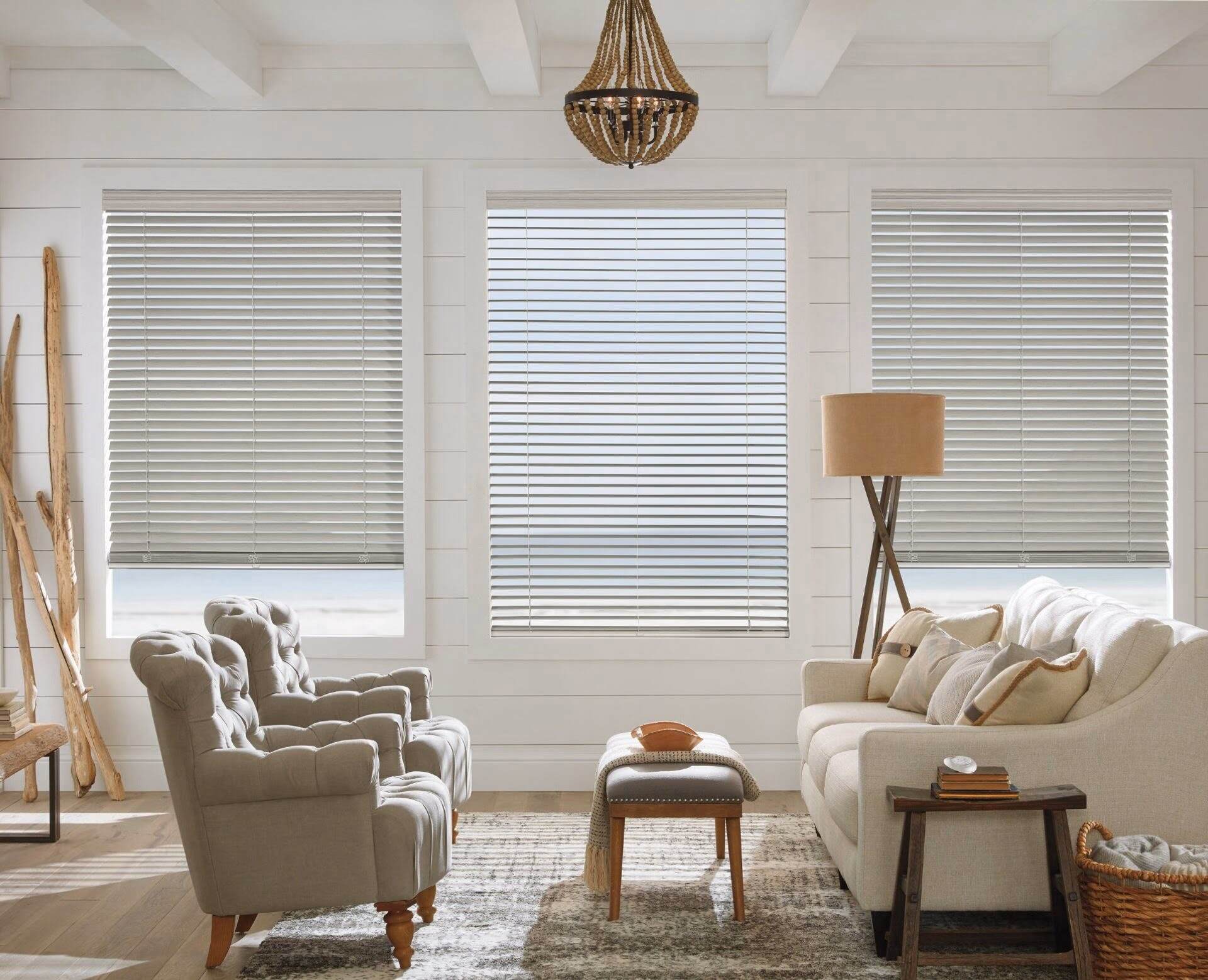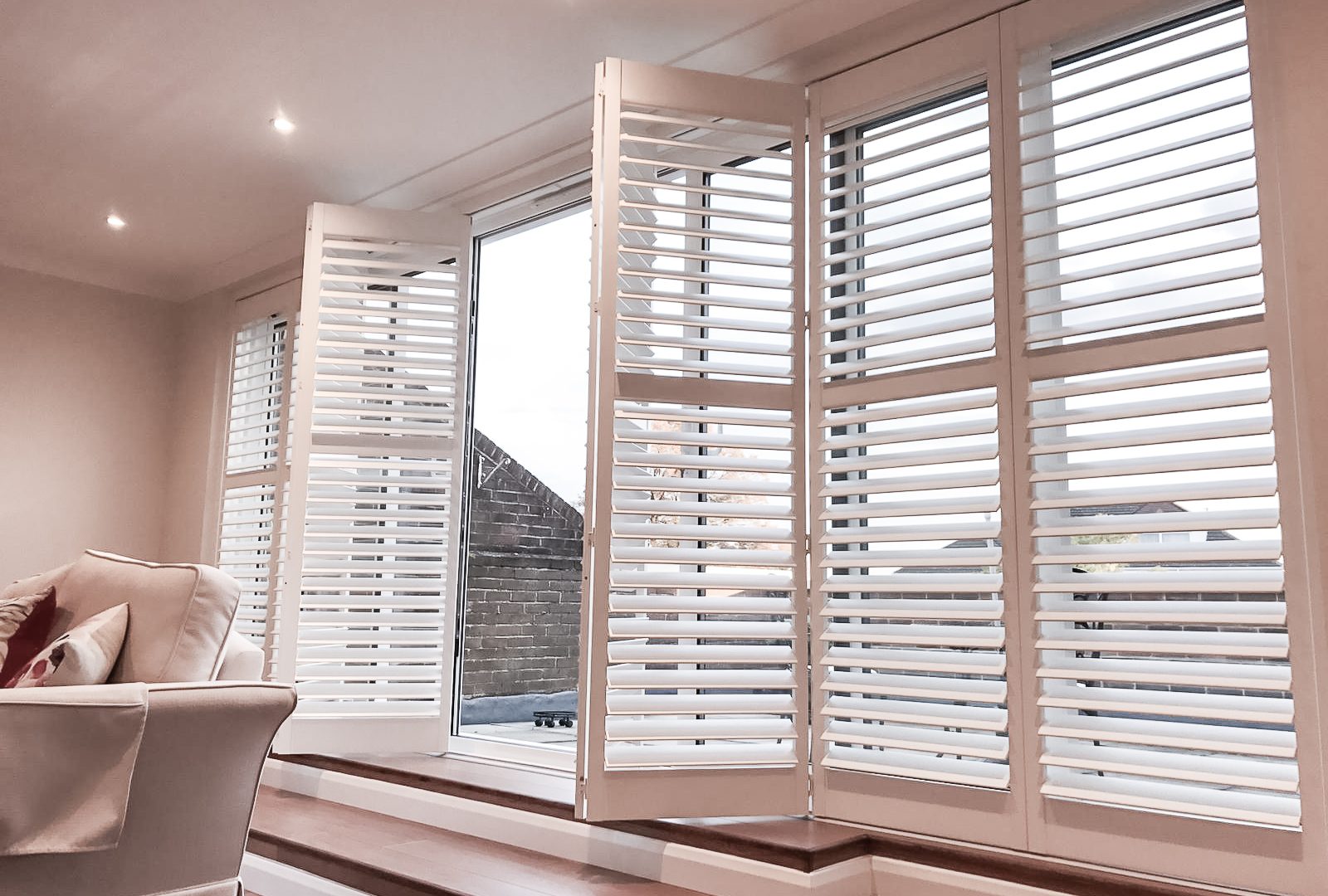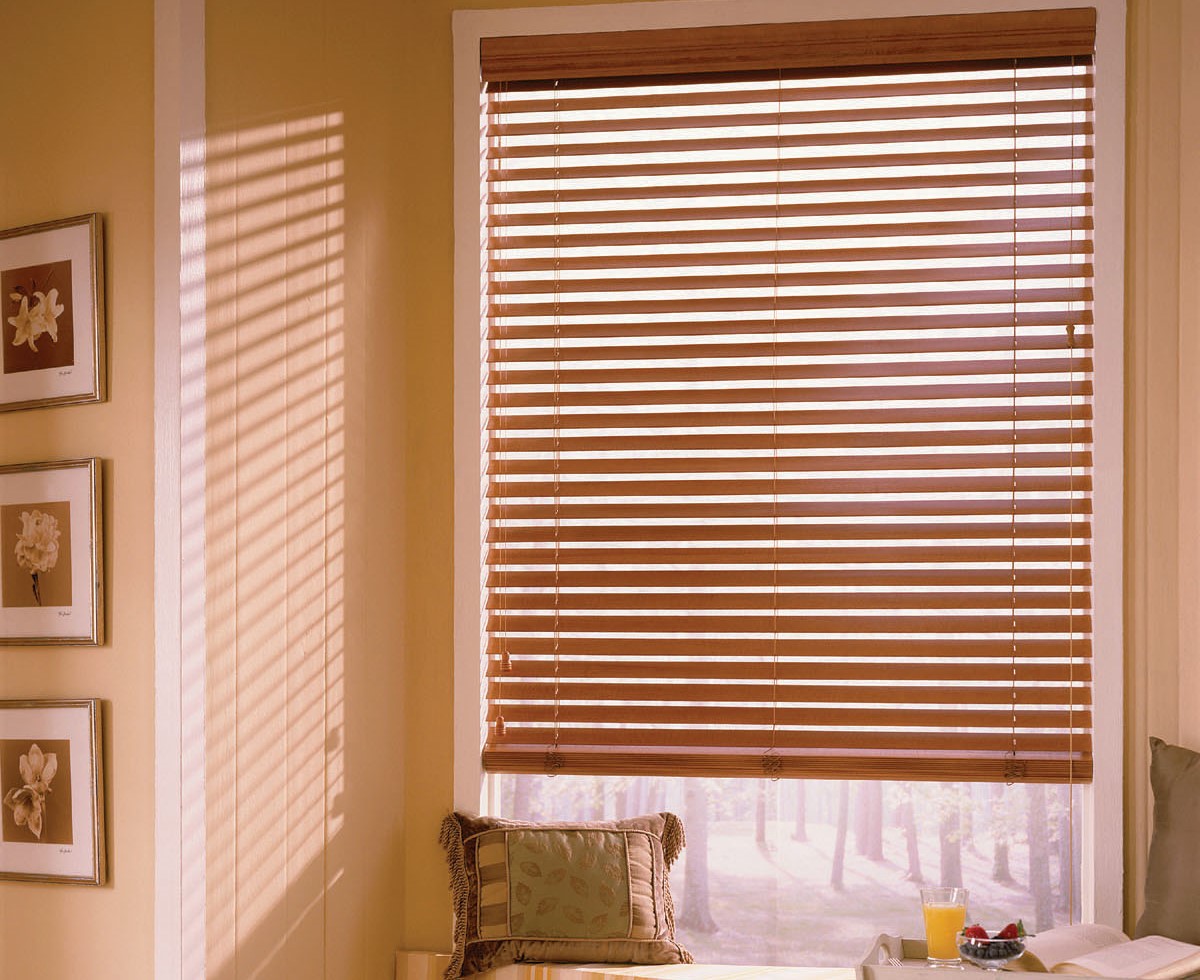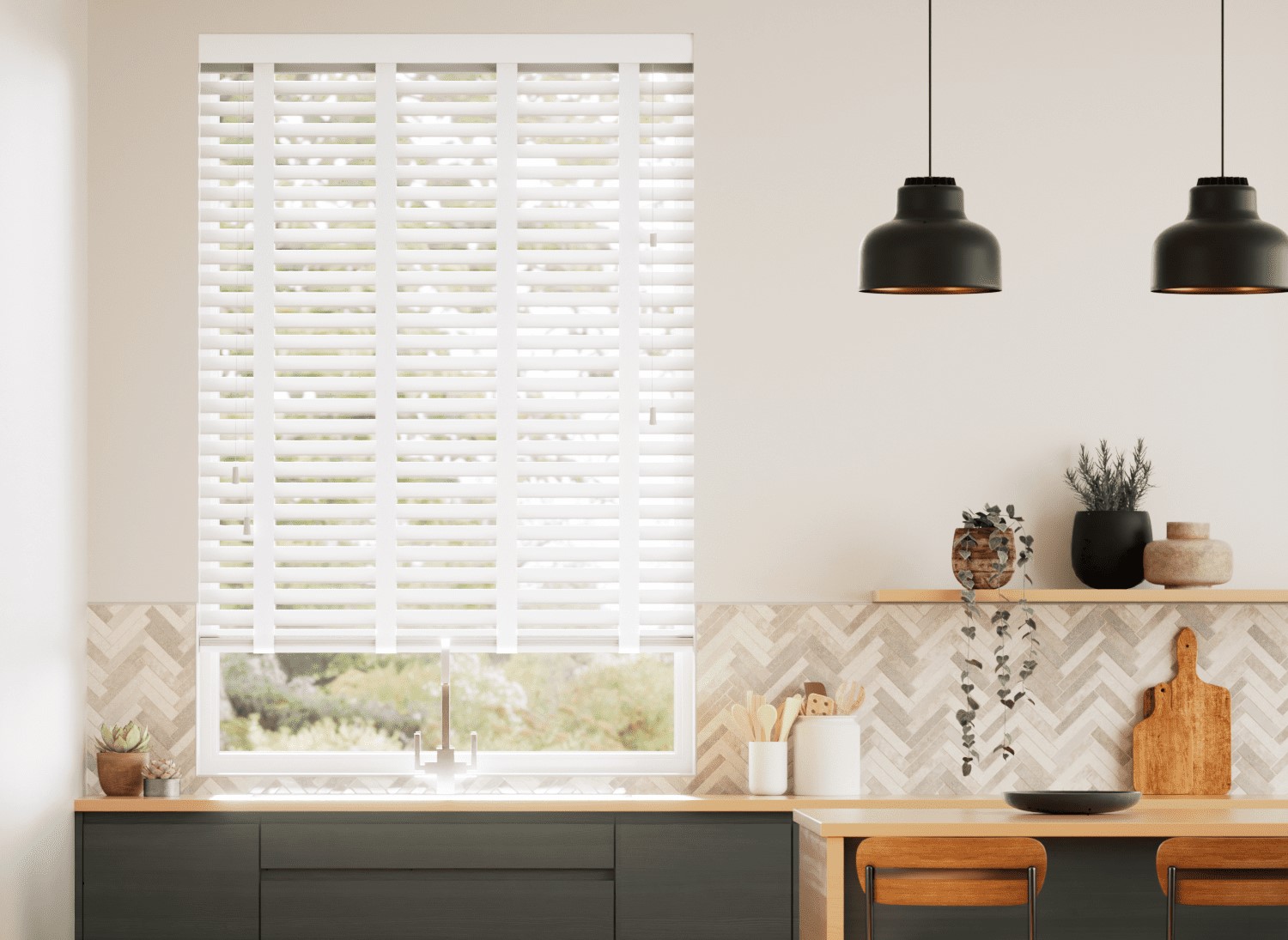

Articles
How To Select The Right Window Blinds
Modified: October 18, 2024
Discover expert tips and advice on choosing the perfect window blinds through our informative articles. Enhance your home's style and functionality with the right blinds today!
(Many of the links in this article redirect to a specific reviewed product. Your purchase of these products through affiliate links helps to generate commission for Storables.com, at no extra cost. Learn more)
Introduction
Window blinds are not just functional, but they also serve as an essential design element in any space. Whether you are renovating your home or simply looking to update the look of a room, selecting the right window blinds is crucial. With so many options available in the market, it can be overwhelming to determine which one is the best fit for your unique needs.
In this article, we will guide you through the process of selecting the perfect window blinds. By considering factors such as functionality, light control, privacy, style, dimensions, materials, maintenance, installation, and budget, you will be able to make an informed decision that enhances the functionality and aesthetic appeal of your space.
So, let’s dive in and explore how to select the right window blinds that meet your specific requirements.
Key Takeaways:
- Consider functionality, light control, privacy, style, dimensions, materials, maintenance, installation, and budget when selecting window blinds to enhance both functionality and aesthetics.
- Accurate measurements, material selection, and budget considerations are crucial for choosing the right window blinds that align with your specific needs and enhance the overall look of your space.
Read more: Where Are Select Blinds Made
Consider the Functionality of Your Window Blinds
The first step in selecting the right window blinds is to determine their primary function in your space. Consider whether you primarily need blinds for light control, privacy, or both.
If you are looking for blinds that provide optimal light control, consider options such as blackout blinds or cellular shades. These types of blinds are designed to block out light completely, making them ideal for bedrooms or media rooms where you want to create a dark, cozy environment.
On the other hand, if privacy is your main concern, consider blinds with adjustable slats, such as venetian blinds or vertical blinds. These blinds allow you to easily control the amount of light and privacy by adjusting the slats to your desired position.
Additionally, think about the ease of operation of the blinds. Do you prefer blinds with cords or ones that are cordless? Cordless blinds are not only safer, especially if you have young children or pets, but they also provide a sleek and modern look.
Considering the functionality of your window blinds will help you narrow down your options and ensure that the blinds you choose are well-suited to your specific needs.
Determine the Desired Level of Light Control
When selecting window blinds, it’s important to consider the level of light control you desire in a particular room. Different rooms have different lighting needs, and the right window blinds can help you achieve the desired ambiance.
If you want to completely darken a room, such as a bedroom or home theater, consider opting for blackout blinds or shades. These are designed to block out all external light and provide maximum privacy. With their light-blocking properties, blackout blinds are perfect for those who need undisturbed sleep during the day or who want to enjoy a movie without any glare.
For rooms where you prefer diffused light and some degree of privacy, consider blinds with light-filtering or semi-opaque fabrics. These blinds will allow natural light to enter the room while maintaining your privacy. They are ideal for living rooms, dining rooms, and home offices, where you want a balance between light and privacy.
If you desire more control over the amount of light entering the room, consider blinds that come with adjustable slats. Venetian blinds and vertical blinds are popular choices as they allow you to tilt the slats to control the amount of light that filters through.
Keep in mind that the color of the blinds can also impact the level of light control. Light-colored blinds will reflect more light and create a brighter ambiance, while dark-colored blinds will absorb more light and create a darker atmosphere.
By determining the desired level of light control, you can narrow down your options and select window blinds that not only meet your functional needs but also create the desired atmosphere in your space.
Assess Your Privacy Needs
Privacy is an important consideration when selecting window blinds, especially for rooms that require a higher level of privacy, such as bedrooms and bathrooms. Assessing your privacy needs will help you determine the type of blinds that will provide the desired level of privacy.
If privacy is a top priority, consider blinds with solid materials or materials that offer complete privacy when closed. Options like roller blinds with opaque or blackout fabrics are excellent choices as they block the view from both inside and outside the room.
Another option for privacy is blinds with adjustable slats. These blinds, such as venetian blinds or vertical blinds, can be tilted to control the view into the room. When the slats are closed, they provide privacy without completely blocking out natural light.
For rooms that require a balance of privacy and natural light, consider blinds with sheer or semi-opaque fabrics. Sheer blinds, such as sheer horizontal shades or sheer vertical blinds, allow light to filter through while still maintaining a certain level of privacy.
It’s important to assess your privacy needs based on the specific room and its location within your home. Rooms facing the street or neighboring properties may require blinds with a higher degree of privacy, while interior rooms may have different privacy requirements.
Don’t forget to consider the orientation of your windows as well. South-facing windows receive more direct sunlight and may require blinds that provide better privacy during daytime hours.
Overall, by assessing your privacy needs, you can choose window blinds that strike the right balance between privacy and natural light, creating a comfortable and secure environment in your home.
Evaluate the Style and Design Options
Window blinds are not just functional; they also play a significant role in the overall style and design of a room. It’s important to evaluate the different style and design options available to ensure that the blinds you choose enhance the aesthetic appeal of your space.
Consider the overall décor and theme of the room. Do you prefer a modern and minimalist look, or are you aiming for a more traditional or rustic style? The style of your window blinds should complement the existing décor and contribute to the desired atmosphere.
Blinds come in various materials, colors, and patterns, providing ample opportunities to showcase your personal style. If you want to make a bold statement, you can opt for patterned blinds or blinds in vibrant colors. On the other hand, if you prefer a more subtle and understated look, neutral colored blinds or blinds with textured fabrics can add depth and sophistication to the space.
Consider the type of window and its location when choosing blinds. For large windows or sliding glass doors, vertical blinds can be a practical and stylish choice. On the other hand, smaller windows may benefit from the classic and versatile appeal of venetian blinds.
In addition to style and design, consider the functionality of the blinds as well. Are you looking for blinds that can be easily adjusted to provide various levels of light and privacy throughout the day? Motorized blinds can offer both convenience and a sleek, modern aesthetic.
When evaluating the style and design options, don’t forget to consider how the blinds will look from both the inside and outside of your home. Some blinds have aesthetic appeal on both sides, making them a great choice for windows that are visible from both interior and exterior spaces.
By carefully evaluating the style and design options available, you can select window blinds that not only enhance the overall look of your room but also reflect your personal style and taste.
Measure Your Window Dimensions
Accurate measurements are crucial when selecting window blinds to ensure a proper fit. Before making a purchase, take the time to measure your window dimensions carefully.
Start by measuring the width of your window. Use a metal tape measure and measure from the inside edges of the window frame. Take three measurements – one at the top, one in the middle, and one at the bottom of the window. Record the narrowest measurement to ensure that the blinds will fit properly.
Next, measure the height of the window. Again, use a metal tape measure and measure from the top edge to the bottom edge of the window frame. Take three measurements – one on the left side, one in the center, and one on the right side of the window. Record the tallest measurement to ensure that the blinds will cover the full length of the window.
Don’t forget to consider any obstacles or obstructions that may affect the installation of the blinds, such as window handles, air vents, or light switches. Take note of their positions and measure the distance from the window edges to ensure that the blinds can be installed without any interference.
If you have multiple windows in the same room, measure each window individually. Even windows that appear to be the same size may have slight variations, so it’s essential to measure each one separately.
When ordering window blinds, it’s always a good idea to double-check your measurements and consult the manufacturer’s guidelines for any specific measurement requirements they may have. Keep in mind that custom-made blinds may have different measurement guidelines compared to standard-sized blinds.
Accurate measurements will ensure that the blinds you select fit your windows perfectly and provide the desired level of coverage and functionality.
When selecting window blinds, consider the level of privacy and light control you need for the room. For bedrooms, opt for blackout blinds, while sheer blinds work well in living areas.
Choose the Right Material for Your Window Blinds
The material of your window blinds plays a significant role in both the functionality and aesthetics of your space. Different materials offer various benefits and can help achieve the desired look and performance. Consider the following options when choosing the right material for your window blinds.
1. Wood: Wood blinds provide a classic and timeless look. They are available in a variety of finishes and stains, allowing you to customize them to fit your décor. Wood blinds offer excellent insulation and light control, making them a popular choice for both traditional and contemporary spaces.
2. Fabric: Fabric blinds, such as roman shades or sheer shades, add softness and texture to a room. They offer a wide range of colors, patterns, and opacities to suit your style and light control needs. Fabric blinds are also an excellent choice for creating a cozy and inviting atmosphere.
3. Aluminum: Aluminum blinds, also known as venetian blinds, are durable and lightweight. They are available in a variety of colors and finishes, making them versatile for any interior style. Aluminum blinds are easy to clean and offer precise control over light and privacy with adjustable slats.
4. Vertical: Vertical blinds are often made of fabric, vinyl, or PVC. They are an ideal option for covering large windows or sliding glass doors. Vertical blinds offer excellent light control and privacy, as well as easy operation and maintenance.
5. Faux Wood: Faux wood blinds are a cost-effective alternative to real wood blinds. They mimic the appearance of wood while offering increased durability and resistance to moisture. Faux wood blinds are a popular choice for kitchens, bathrooms, and other high-humidity areas.
Consider the specific needs of each room when selecting the material. For example, moisture-prone areas like bathrooms or kitchens may benefit from materials like PVC or faux wood that are resistant to humidity and easy to clean. In contrast, bedrooms or living rooms may benefit from the warmth and elegance of natural wood blinds.
Take into account your lifestyle and maintenance preferences as well. Some materials require more upkeep than others. If you prefer low-maintenance options, consider materials that are easy to clean and resistant to fading or dust accumulation.
By choosing the right material for your window blinds, you can strike the perfect balance between functionality and style, enhancing the overall look and performance of your windows.
Consider the Maintenance and Cleaning Requirements
When selecting window blinds, it’s important to consider the maintenance and cleaning requirements associated with each type of blind. Different materials and styles may have varying cleaning methods and maintenance needs.
Some window blinds require more frequent cleaning and may be more time-consuming to maintain. For example, fabric blinds may need periodic vacuuming or gentle spot cleaning to remove dust or stains. On the other hand, blinds made of materials like aluminum or faux wood are generally easier to clean and only require a quick wipe-down with a damp cloth or feather duster.
Consider your lifestyle and the level of maintenance you’re willing to commit to. If you have a busy schedule or prefer low-maintenance options, it may be best to choose blinds that are easy to clean and require minimal upkeep.
Additionally, consider the factors that may contribute to the need for cleaning. For example, if you live in a high-dust area or have pets, you may want to avoid blinds that easily collect dust or traps pet hair. Choosing blinds with smooth surfaces or materials that repel dust can help minimize the need for frequent cleaning.
It’s also important to keep in mind any specific care instructions provided by the manufacturer. Some blinds may require special cleaning products or methods to maintain their appearance and functionality. Be sure to follow these instructions to ensure that your blinds remain in good condition.
Regular maintenance and cleaning not only keep your blinds looking their best but also extend their lifespan. Taking the time to consider the maintenance and cleaning requirements of different window blinds will help you select blinds that align with your maintenance preferences and keep your windows looking great.
Evaluate the Installation Process
Before purchasing window blinds, it’s important to evaluate the installation process and consider your own DIY skills or willingness to hire a professional for installation. Different types of window blinds may have varying installation requirements.
Some blinds, such as roller blinds or cellular shades, come with simple brackets and can be installed easily by following the provided instructions. These types of blinds typically require minimal tools and can be mounted directly onto the window frame or wall.
On the other hand, blinds like venetian blinds or vertical blinds may involve a slightly more complex installation process. They may require additional brackets, drilling holes, and precise measurements to ensure proper alignment and functionality. If you’re not comfortable with DIY projects or lack the necessary tools, it may be best to hire a professional to ensure a proper installation.
Consider the time and effort you’re willing to invest in the installation process. If you have multiple windows or large windows, installing the blinds on your own can be time-consuming. In such cases, it may be more convenient to seek professional installation services to ensure faster and hassle-free installation.
Another factor to consider is the type of window frame or wall you have. Different materials, such as wood or concrete, may require specific installation methods or additional hardware to securely mount the blinds. Assess the condition of your window frames or walls to determine if any modifications or reinforcements are needed.
Lastly, if you’re renting a property, you may want to consider blinds that are easy to remove or non-permanent installation options. This way, you can easily take the blinds with you when you move out without causing any damage to the property.
By evaluating the installation process, you can determine whether you’re comfortable with DIY installation or if hiring a professional is the best option for proper and efficient installation of your window blinds.
Read more: How To Remove Window Blinds
Determine Your Budget
One of the key considerations when selecting window blinds is determining your budget. Window blinds come in a wide range of prices, and understanding your budget will help you narrow down your options and make a decision that aligns with your financial goals.
Start by establishing a budget range that you’re comfortable with. Consider the number of windows you need blinds for and the level of quality and features you’re looking for. Keep in mind that different materials, sizes, and styles can significantly impact the cost of window blinds.
Research the average prices for the type of blinds you’re interested in. Look for reputable retailers or online stores that offer a range of options within your budget. It’s important to strike a balance between price and quality to ensure that you’re getting a product that meets both your needs and your financial constraints.
Consider the long-term benefits when evaluating your budget. While it may be tempting to opt for the lowest-priced blinds, keep in mind that investing in higher-quality blinds can provide increased durability, better light control, and improved insulation, which can lead to energy savings in the long run. Assess the overall value and cost-effectiveness of the blinds you’re considering, rather than solely focusing on the upfront price.
It’s also worth exploring any sales, discounts, or promotions available. Many retailers offer seasonal sales or bundle deals that can help you stretch your budget further. Sign up for newsletters or follow social media accounts of window blind retailers to stay updated on any special offers.
Finally, consider the warranties and return policies offered by different manufacturers or retailers. Understanding the terms and conditions of the warranty can provide peace of mind and protection for your investment.
By determining your budget and considering various factors like quality, features, and long-term benefits, you can make an informed decision that fits within your budget and meets your needs.
Conclusion
Selecting the right window blinds is a crucial step in enhancing both the functionality and aesthetics of your space. By considering factors such as functionality, light control, privacy, style, dimensions, materials, maintenance, installation, and budget, you can make an informed decision that meets your specific requirements.
Begin by assessing the functionality you need from your blinds, whether it’s light control, privacy, or both. Determine the desired level of light control and consider the different options available, such as blackout blinds or adjustable slats. Assess your privacy needs and choose blinds that provide the appropriate level of privacy for each room.
Evaluate the style and design options to ensure that the blinds you choose complement the overall décor and theme of the room. Consider factors such as the material, color, and pattern to achieve the desired look.
Accurate measurement of your window dimensions is crucial to ensure a proper fit. Take precise measurements of the width and height of each window and consider any obstacles or obstructions that may affect the installation process.
Choose the right material for your window blinds based on factors such as durability, aesthetics, and maintenance requirements. Consider the cleaning and maintenance needs of each material to ensure that it aligns with your preferences and lifestyle.
Evaluate the installation process and decide whether you’re comfortable with DIY installation or if hiring a professional is the better option for you. Take into account factors such as time, effort, and the specific requirements of your window frames or walls.
Lastly, determine your budget and consider the quality and long-term benefits of the blinds you’re interested in. Strive to find a balance between price and quality to ensure value for your investment.
In conclusion, selecting the right window blinds requires careful consideration of various factors. By taking the time to assess your needs, research options, and weigh different factors, you can choose window blinds that not only align with your functional requirements but also enhance the overall look and feel of your space.
Frequently Asked Questions about How To Select The Right Window Blinds
Was this page helpful?
At Storables.com, we guarantee accurate and reliable information. Our content, validated by Expert Board Contributors, is crafted following stringent Editorial Policies. We're committed to providing you with well-researched, expert-backed insights for all your informational needs.

